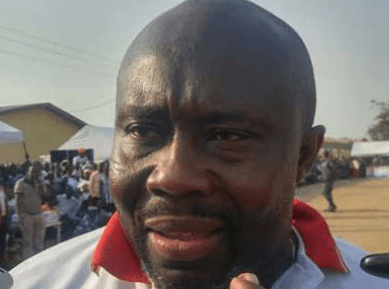KelniGVG paid $2.98m so far – George Andah

The Deputy Minister of Communications, Nenyi George Andah has said that contrary to assertions that KelniGVG has been paid $7.5 million, the company has been paid only $2.98 million representing two months’ pay.
He said out of that amount, National Communications Authority (NCA) paid $1.192 million representing 40 per cent and the Ghana Revenue Authority (GRA) paid the remaining $1.788 million.
George Andah was speaking at a forum to finally explain the common monitoring platform deal with KelniGVG Limited to journalists.
The $89 million five-year contract for a common platform by the Ministries of Finance and of Communication for the real time monitoring, has been awarded to KelniGVG Limited through a restricted tender process.
The deal is for the vendor to monitor both domestic and international telecom traffic, revenue assurance, fraud management and mobile money monitoring.
The build, operate and transfer (BOT) contract, signed December 27, 2017 only came to light last month, and has since come under heavy and protracted public scrutiny, particularly the contract fee, the choice of a vendor and issues of consumer privacy and data protection.
The Deputy Minister has been at the forefront of explaining the prudence of the contract and the fact that it is in fulfilment of the Communications Service Tax (Amendment) Act 2013, ACT 864, which authorizes the two ministries to establish a common monitoring platform and enjoins telecoms companies to allow real time monitoring of their traffic.
It has been five months since the contractors started building the monitoring system on the premises of the NCA, which journalists saw during a tour of the facility, and critics have said government has paid $7.5 million so far, even though the vendor has not started monitoring yet.
But George Andah explained that since it is a BOT model, the vendor has shipped $50 million worth of equipment into the country already so it would have been prudent to have paid them $9 million to cover the entire contractual six months building period, but government has paid for only two months.
Another Deputy Minister of Communications, Vincent Sowah Odotei also explained that because it is an international contract, the vendor, KelniGVG had to go and borrow money to start work even if government has not paid anything yet.
He said “we cannot make the vendor suffer because the banks will be charging their monthly installment so we also have to pay ours to the vendor per the terms of the contract, even though we are yet to start making money from their work.”
Vincent Odotei said the more government delays in making monthly installments, the higher the next monthly installment goes, because per the terms of the contract “we are supposed to pay $9 million by the close of June.”
Minister of Communications, Ursula Owusu Ekuful emphasized that the government has not awarded a 10-year-contract worth $178.9 million to KelniGVG, as critics have repeatedly said, but rather a five-year contract worth $89 million renewable for another five years if government finds it worthy.
She said the value of the deal does not only lie in the relatively lower contract sum, compared to what two previous vendors were paid for only two services, but also lies in the technology and knowledge transfer components of the deal.
“The vendor is required to refresh the equipment every three years and also work with and train the workers of the NCA and GRA to man the system when the KelniGVG finally hands over to government,” she explained.
The Director-General of the NCA, Joe Anokye said the KelniGVG deal has great value for money because for the first time it will enable government to generate its own Call Detail Records (CDRs) and compare with those of the telecoms companies to ensure accurate taxes and fees are paid.
The government had earlier projected some $1 billion expected from the telecoms sector over the next five years and believes the deal will help to secure that money for the state.
Joe Anokye said so far no telecoms company has been connected for live monitoring but they expect that by the June 11 deadline, each company would have connected for real time monitoring to start in earnest.
By Samuel Dowuona
